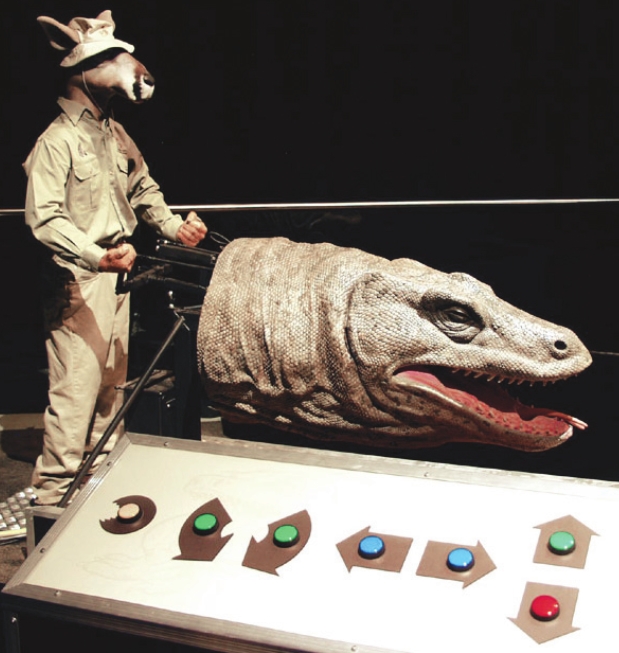
Stimulating inanimate objects
Breathing life into inanimate objects is a centuries-old pursuit.
In fact, it was the work inside Villard de Honnecourt’s portfolio (1220-1240) that shows the earliest sketches of animatronics, or the use of engineering robotic simulations of living things. In short, consider them mechanized puppets that can be programmed or remotely controlled.
This blending of science, engineering, technology and art has been used since; animals, plants and mythical creatures have all become more life-like with the advent of these machines. And we’ve seen it everywhere, including with the iconic T.Rex in 1993’s Jurassic Park, the animatronics pet Furby and Mr. Potato Head at the Toy Story exhibit inside Disney Hollywood Studios.
My own earliest memories involve Chuck E. Cheese’s and work by Jim Henson.
Speaking of Chuck E. Cheese’s, Shreveport’s Brandon Oldenburg, partner at Moonbot Studios, had the company as a client while working for REEL FX in Dallas, Texas, in 1997. Oldenburg helped produce a new 45-minute show experience, requiring two large video screens and animated content that moved between the two. The walkabout characters’ animatronic heads worked via a remote control puppeteer, with a performer being the body itself. Characters, including Munch and Squally, would dance around on the blue screen, and Oldenburg was responsible for directing the characters on what they needed to do (such as, “Oh, look out, a fly’s coming, dodge!”).
“Puppeteering and animation relates whether you have
sock on our hand or you’re programming the coordinates in a CGI
character – it’s all the same,” Oldenburg said. “You just have to make a
convincing performance that brings life to the characters.”
One
way to expose children to this industry, Oldenburg said is by way of
LEGO bricks, although that wasn’t exactly how he himself built robots as
a child: “When I was a kid, I would take apart the broken [and
unplugged] electronics in the house,” he said. “I always thought I could build a robot. I tried to do it with a trashcan, a remote control car and a calculator.”
Today,
however, building robots is easier than ever with LEGO bricks. “Not
only is it impressive and exciting for a kid,” Oldenburg said, “You’ve
got all the parts and pieces marginally built for you through LEGO.
That’s a great entry point into understanding animatronics.”
Another way to spark your child’s animatronic curiosity is to visit the latest traveling exhibit at Sci-Port, “How to Make a Monster: the Art and Technology of Animatronics,” opening Dec. 6.
“How
to Make a Monster,” created by John Cox (remember the sheep in
“Babe?”), will explore the method of taking a creature from conception
to the silver screen, including the designing, storyboarding, sculpting,
molding and finishing. The exhibit features the work of Cox and his
company, John Cox’s Creature Workshop, which includes his work in “Babe”
that landed him the 1995 Visual Effects Academy Award. Other creatures
featured include alien guts from “Pitch Black,” Inspector Gadget’s hand
and the crocodile tail from “Peter Pan.”
The
exhibit is relatable to anyone, no matter the age; within it you’ll
find a character doing something you might do for work, at school or as a
hobby. Bones and muscles give way for additional lifelike
characteristics, and each of the 11 exhibits offers opportunities for
people of all ages to become animatronic puppeteers, a light technician
or monster builder. Robotic and LEGO-related programming will complement
the exhibit.
To take
it one step further, visit animatronicshop.com, and you will find
StarBots, or Animatronic Learning Kits. These are made up of STEM-and
STEAM-maker skills, including Arduino microcontrollers, mechanics and
papercraft. You can also learn how to make an animatronic puppet using
one of the purchasable kits.
Anyone with an imagination can appreciate animatronics. Perhaps that’s why it’s been around since the 13th century.